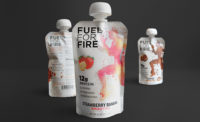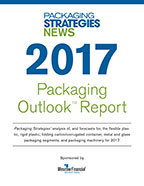Packaging Outlook 2020: Flexible Plastic Packaging

The outlook for flexible packaging in the U.S. remains positive, despite the continued pressure that persists around packaging waste in general, and single-use plastic packaging specifically. The industry was estimated at approximately $31.8 billion in annual sales in the U.S. for 2018 with a steady growth rate of 2.7%.
2019 presented the industry with the most challenging year yet concerning anti-plastic sentiment and packaging legislation that could negatively impact the industry. As usual, the industry rose to the occasion and brought forth concrete alternatives that provide real solutions to the knee-jerk reaction legislation we saw introduced at both the state and federal levels. While we were successful in ensuring that no legislation was passed in 2019, 2020 will see the return of many of the same bills as well as new ones.
Where many U.S. policymakers were reacting emotionally to the highly charged issues of single-use plastics and marine debris, FPA and its membership is concentrating on the real issues, which are the outdated recovery and recycling infrastructure in the U.S. and the lack of viable end-of-life management systems for today’s packaging, including flexible packaging. FPA assisted in the introduction of the RECOVER Act at the federal level, which will incentivize new technology in the U.S. for recycling and composting infrastructure. FPA is also engaged in submitting comments and amendments to several bills at the state and federal levels regarding packaging end-of-life management that would mitigate negative impacts to the growth of the industry and provide real waste management solutions.
The industry’s education and outreach to policy makers, customers and consumers also increased in 2019 with Facebook, LinkedIn and Instagram additions to the Association’s social media platforms to create the necessary discussion to combat misinformation and provide information on the environmental benefits of flexible packaging. FPA will continue to “fight the good fight” with regard to the war on plastics using science and education to preserve truly sustainable and lifesaving plastic packaging, and avoid the unintended consequences of flexibles being sacrificed for less environmentally beneficial alternatives.
Due to the environmental benefits of flexible packaging, including less water and energy usage; protection of the products with the least amount of packaging; transportation efficiency; food waste prevention; and reduced greenhouse gas emissions, among others, the industry is still strong and growing. Food packaging is still the biggest sector for flexible packaging, with 50% of the market, and is estimated at $15.9 billion. If you add beverages, it becomes 59% and $18.8 billion. Rounding out the markets are pet food (4% / $1.3B), personal care (6% / $1.9B), tobacco (2% / $0.6B), other non-food (5% / $1.6B), industrial applications (7% / $2.2B), medical and pharmaceutical, (9% / $2.9B) and consumer products (8% / $2.5B).
Breaking down the largest segment, food, FPA projects growth in every category (CAGR 2018-2023), with baby food projected to grow by 1.4%, dairy packaging by 0.8%, fruits and vegetables by 4.6%, ready meals by 1.7%, savory snacks by 1.6%, sweat spreads packaging by 3.5%, and soup packaging by 1%. Fifty percent of the value of flexible packaging structures produced by FPA State of the Industry survey respondents is generally supplied as “rollstock” (primary product filing, secondary/sleeve wraps, bundling/overwraps, retail carry bags and storage/trash bags). Manufactured lay flat, non-retort pouches are a distant second with approximately 16% and stand-up, non-retort pouches are 5%. Labels and lidding account for 3%, with stand-up retort pouches at 1%. When asked for data on where rollstock went in terms of packaging structures, respondents reported that 37% of the value of rollstock is characterized as manufactured lay flat, non-retort pouches, and another 13% as lay flat retort pouches. Stand-up retort pouches came in third at 12% and labels and lidding at 10%.
Looking three to five years out, State of the Industry survey respondents noted:
- Continued consolidation and private equity firm interest due to the industry’s record of consistent growth
- Challenges in attracting, developing and retaining a skilled workforce
- Opportunities for companies that embrace packaging innovation, sustainability, recyclability and new manufacturing technology to meet customers’ expectations
- Continued strong demand for flexible packaging — as traditional packaging formats can be replaced by flexible packaging to enhance sustainability and product protection that result in cost savings.
In 2020, FPA will continue to strive for workable legislation concerning end-of-life management for packaging, particularly flexible packaging. Ongoing work on end-of-life solutions — with partners such as the Materials Recovery for the Future, Hefty® EnergyBag® program, and the University of Florida Center for Advanced Packaging Recycling — will be supported. FPA will also publish a new report detailing life-cycle environmental analyses of flexible packaging versus alternative packaging types for the ecommerce market.
Alison Keane, ESQ., president and CEO of the Flexible Packaging Association, provided the information for this section. For information, visit flexpack.org.
Packaging Outlook 2020 Articles:
|
Looking for a reprint of this article?
From high-res PDFs to custom plaques, order your copy today!







